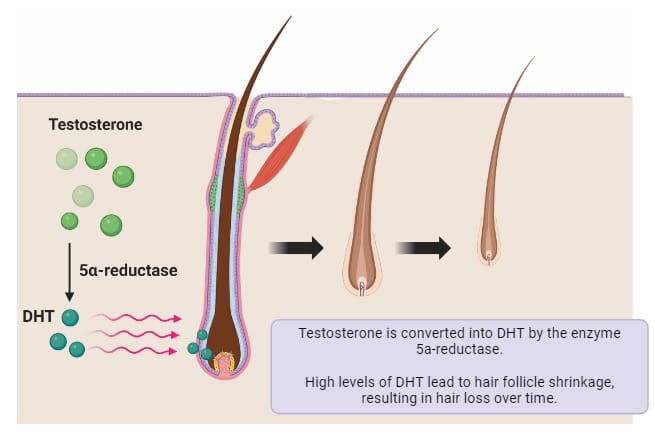At 1 month after a hair transplant you can expect your newly implanted hair in your hairline or crown to start falling out. You may also have some mild redness present where your newly implanted hairs have been placed. The rest of your scalp should have healed entirely by this point although you may report some itching in your donor area.
It is important to note that 1 month after your hair transplant, your scalp would have healed slightly differently depending on whether you have had an FUE or an FUT hair transplant.

1 Month After FUE hair transplant surgery
After 1 month, you would have recovered almost entirely following an FUE hair transplant. As the surgery is minimally invasive, your donor area would have healed entirely. You may report some mild itching in the donor area and this can be normal.
Your recipient area will look slightly red or pink in colour and your transplanted hair will have started to shed. This is normal and the shedding can last 1-3 months. After 4 months, your hair will start to grow gradually.
1 Month After FUT hair transplant surgery
After 1 month, you would have recovered well following an FUT hair transplant. As the surgery is more invasive than FUE surgery, your donor site’s surgical wound may still feel a touch tender. It will almost have healed entirely. If you are worried about the area not healing then please contact your hair transplant surgeon who can advise accordingly.
Your recipient area will look slightly red or pink in colour and your transplanted hair will have started to shed. Like in an FUE hair transplant, this is normal and the shedding can last 1-3 months.
Post-surgery care for your hair transplant for the 1st month
Following your hair transplant, it’s vital that you take good care of your scalp. One of the most important things you should avoid is touching your scalp or hair during the first few days post-surgery, as the transplanted grafts are still embedding into the scalp during this time. It takes 2 weeks for the hairs to fully secure into the scalp and you read more about this topic in our dedicated article here. You might have to sleep in an elevated position using a neck pillow for the first few days to keep any pressure off your head. This is shown in the diagram below.
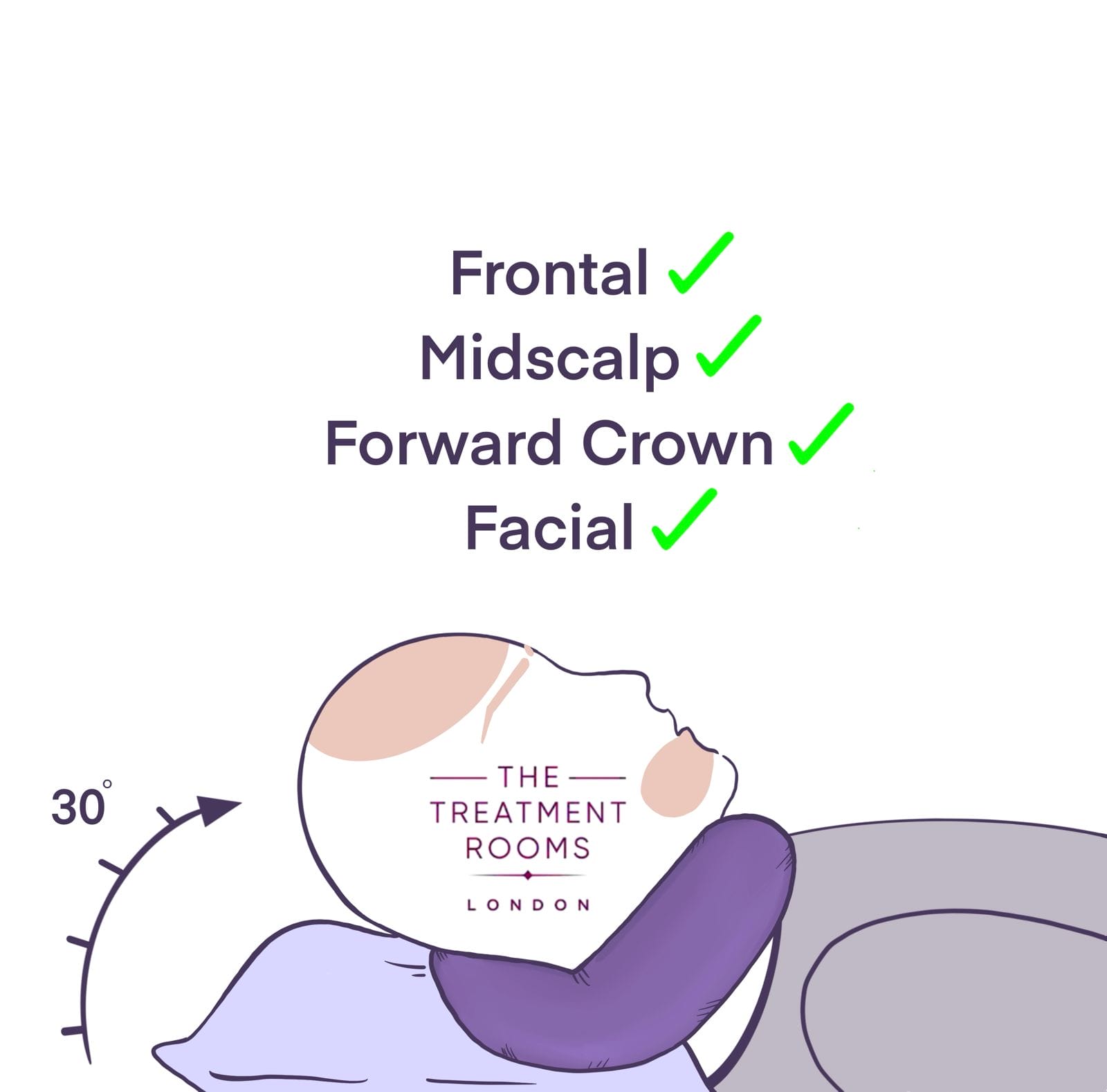
During the first two weeks, it’s also advisable to avoid any strenuous exercise or work, to reduce any risk that can be posed to your transplant during these activities. You’ll also need to avoid using the power shower post-surgery, and avoid exposing your head to direct sunlight for the first 2 weeks after having your hair transplant.
Our clinic will advise you when you can start washing your head again. This usually takes place after 4 days have passed. This process can help the scabs formed after the transplant to soften and wash away safely after around two weeks.
After about two- three weeks, the redness from your scalp area should have subsided. It is also at this point that you may start to notice your transplanted hair shedding.
Reaching 1 month after hair transplant surgery
When you reach the 1 month mark you aren’t likely to experience any new hair growth. Instead, you are likely to start seeing your hair shedding. This is a completely normal part of the process, where the transplanted grafts enter a sleep phase and shed themselves, getting your scalp ready for a new growth cycle to begin with the new hair.
You may also see a slight pink tinge to your skin where you have had your operation- particularly if you have a lighter skin tone. This is seen in the image below where the patient has mild redness and his transplanted hair has started to shed.
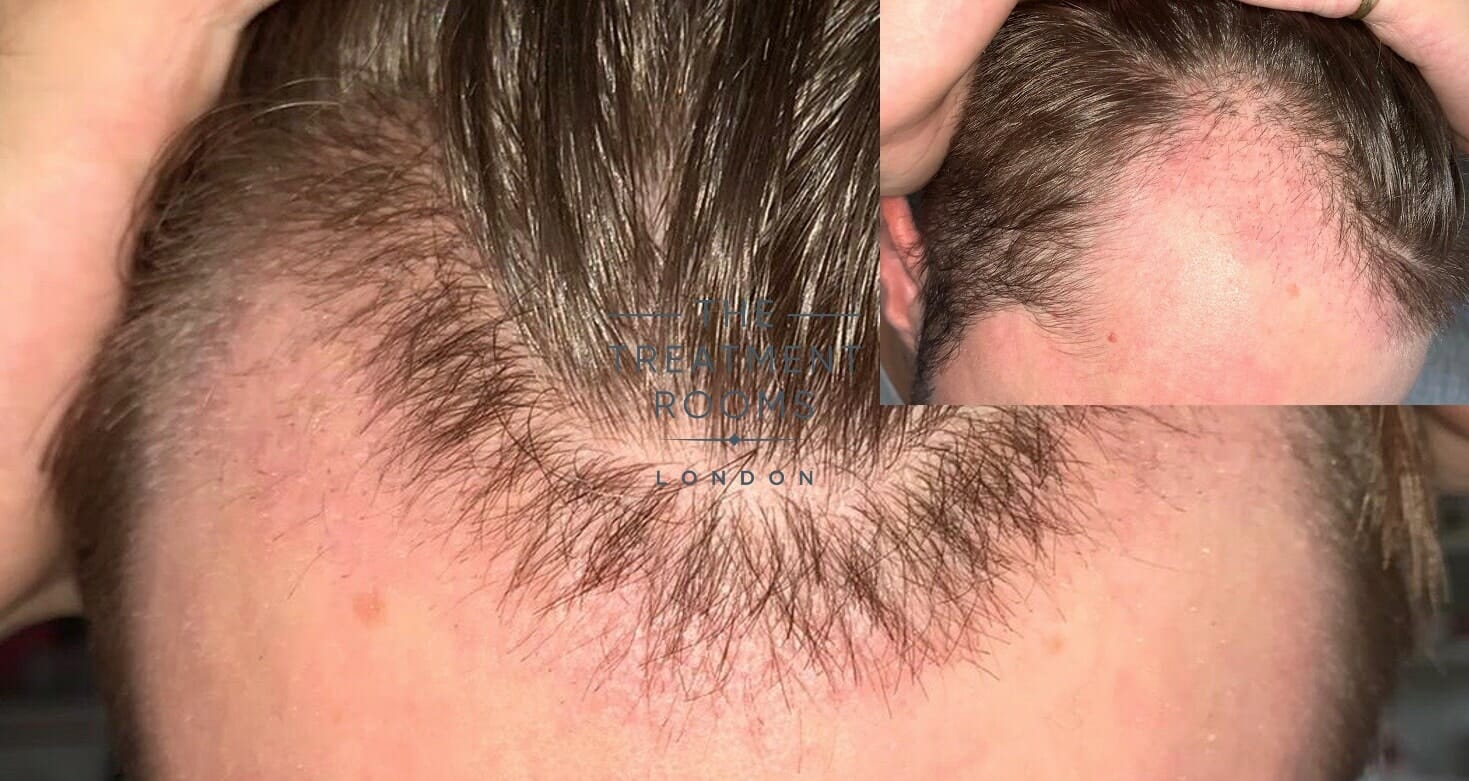
When will your hair start to regrow?
Typically, around month 3 or 4 following a FUE hair transplant procedure you should start to see new hair growing through. In some cases, it may start a little earlier than this. Regrowth may start slowly at first, but will steadily increase as the months go by, with around half of the results achieved by about six months. It may take a further six months or so to achieve the full effects of the procedure. You can see a full hair transplant timeline on our website by clicking here.
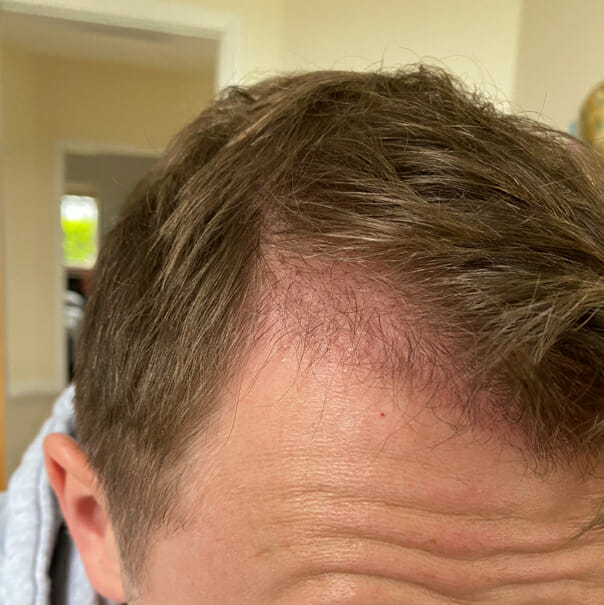
It’s important to keep in touch with your hair transplant clinic following a hair loss procedure to ensure healthy healing and recovery is taking place. Our Surgeons are experts in ensuring their patients recovery and aftercare goes to plan. If you are interested in having your hair transplant with them, please don’t hesitate to contact us today.
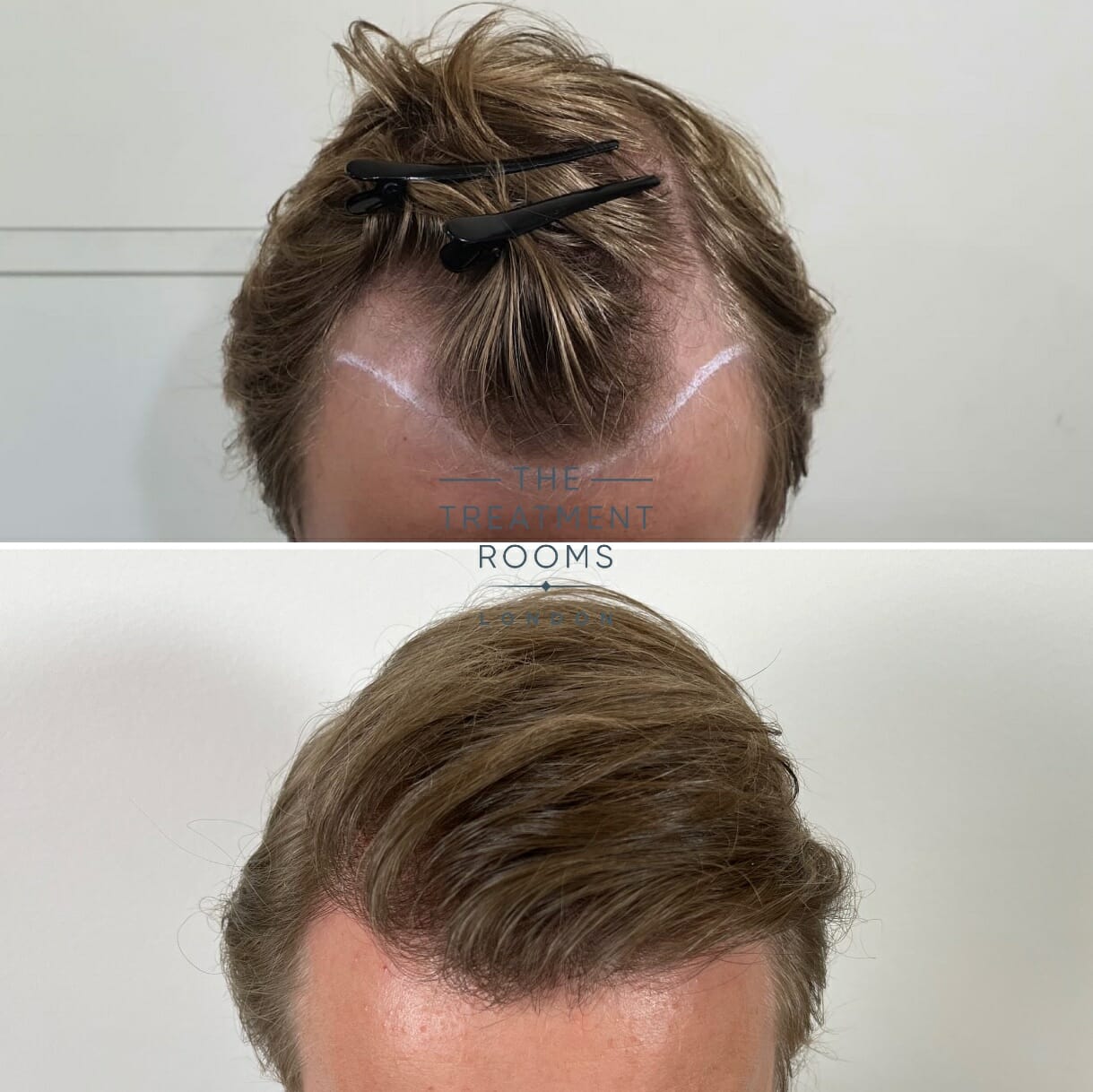
Share:
Authored by
Reviewed by
Book a Consultation
Related Blogs
Does Finasteride Cause Erectile Dysfunction?
October 22, 2025
Finasteride is one of the most promising medicines against male pattern baldness and benign prostatic hyperplasia (BPH)….
What Happens If You Stop Using Minoxidil
October 8, 2025
So, you’ve been faithfully rubbing Minoxidil into your scalp like a love potion for your hair, and…
Zinc Supplements After Hair Transplant Surgery: What You Need to Know
October 7, 2025
Zinc is an essential nutrient in wound healing, tissue repair, and the healthy development of hair follicles….
What to Eat After a Hair Transplant: Essential Nutritional Guide
October 5, 2025
After the stress, needles, and surgeries, food becomes more than nourishment. A warm bite, a familiar flavour,…
Hair Loss Treatment That Works: A Complete Guide for 2025
October 3, 2025
Millions of men, women, and teenagers have hair loss problems. In 2025, hair restoration is going through…
What is an FUE Hair Transplant?: A Comprehensive Guide to Procedure, Recovery, and Results
October 3, 2025
Hair transplant surgery has gained popularity over the years, with more people now comfortable taking care of…
Does Omega-3 Deficiency Cause Hair Loss? Evidence, Mechanisms & Nutrition Guide
September 16, 2025
Omega is an essential fatty acid required for a healthy body, skin and scalp. Modern-day diets are…
When Can You Use Nizoral After a Hair Transplant?
September 12, 2025
Nizoral is a medicated shampoo that contains the antifungal drug ketoconazole. This shampoo acts against fungal infections…
When Can You Safely Use Oil After a Hair Transplant? Expert Timeline & Tips
September 10, 2025
There is simply something about running your fingers through hair that is healthy and well-nourished. Hair oils…







